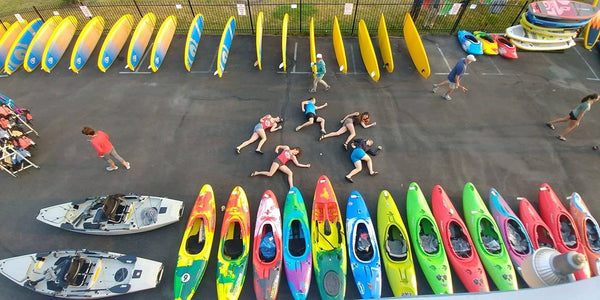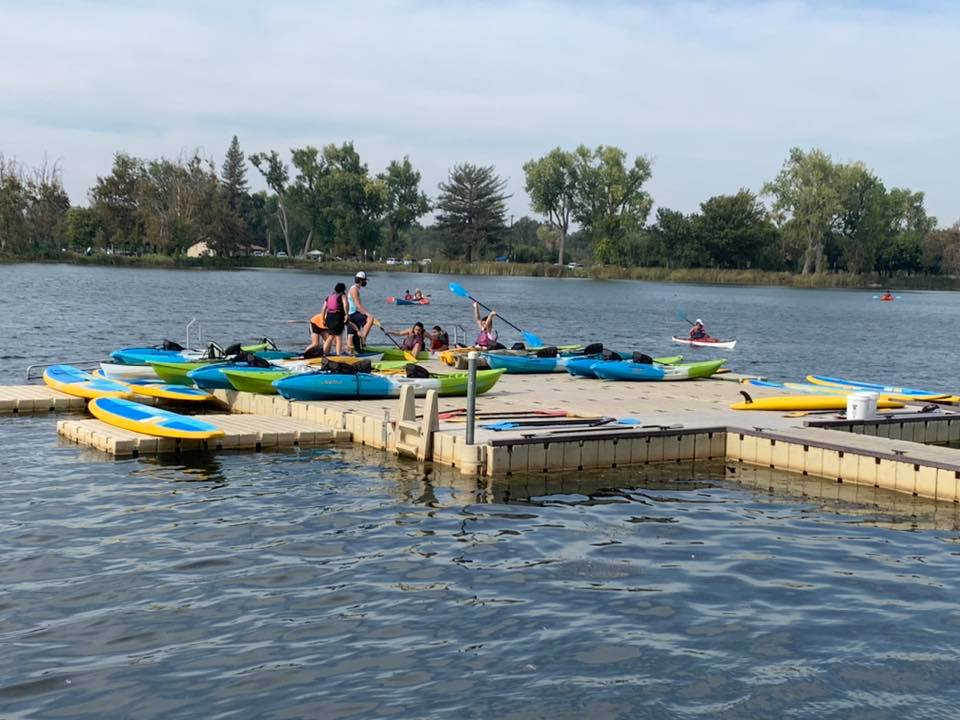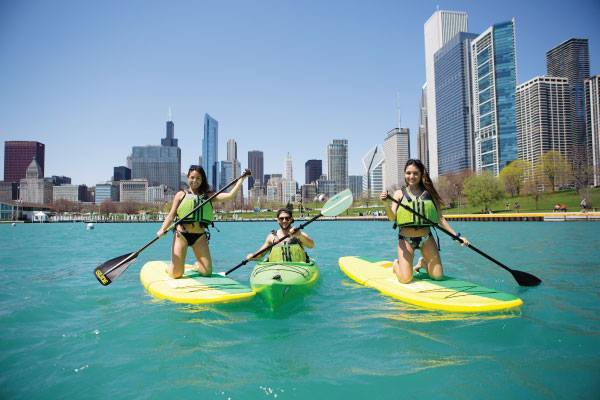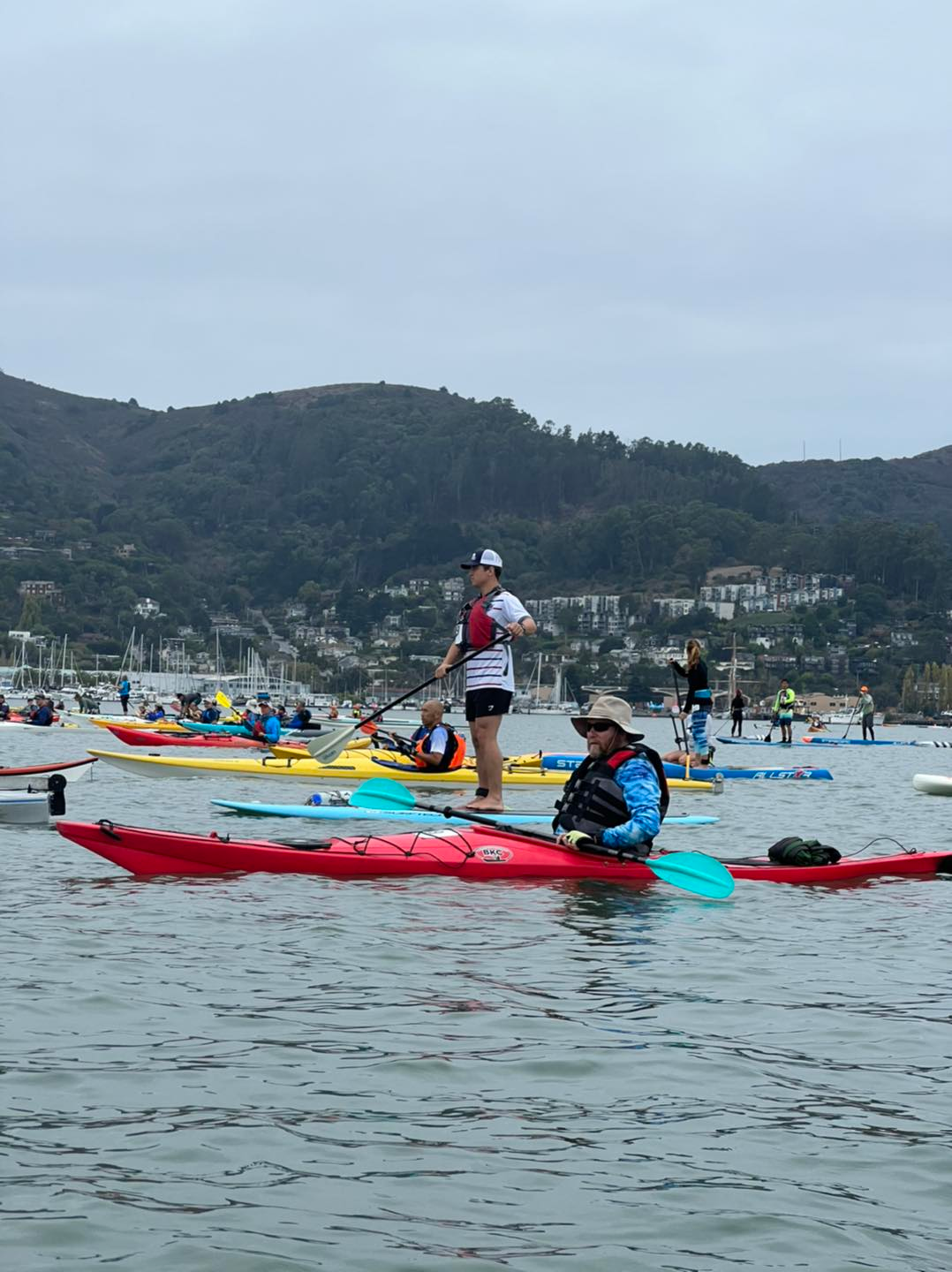
Are Paddle Boards as Fast as Kayaks?
Our latest article in the paddle board vs kayak competition focuses on which vessel is faster: the paddle board or the kayak?
Introduction:

Dive into the exhilarating world of paddle boarding and kayaking with us at Glidesup.com. Our previous discussions have shed light on the versatility and fun that paddle boarding, also known as SUP, brings to the water compared to kayaking. Yet, a question remains unanswered: which is faster, the kayak or the stand-up paddleboard (SUP)? This article navigates the speed dynamics between the two, exploring various conditions to see which mode of paddling takes the lead.
Paddle Boarding vs. Kayaking:

When you embark on a stand-up paddleboarding adventure, you're essentially standing and propelling yourself forward with a long, single-bladed paddle. Kayaking, on the other hand, seats you close to the water's surface, where you navigate with a double-bladed paddle. This fundamental difference means that paddleboarders need a good sense of balance, especially in choppy waters, making it a slightly steeper learning curve than kayaking.
What Paddle Boarders and Kayakers Share:
Despite their differences, both paddle boarding and kayaking offer a comprehensive workout that engages the entire body. Many are surprised to learn that even the legs get a serious workout, essential for balance on a SUP and for powering strokes in a kayak. This common ground highlights the full-body fitness benefits, with paddle boarding edging out slightly due to the additional balance required.
Speed Showdown: Kayak vs. SUP
The debate heats up when we compare the speed of kayaks and SUP boards under different conditions. Windy conditions favor kayaks due to their low profile, whereas SUP boards, with their elevated stance, catch the wind more effectively with it at their back, turning the paddleboarder into a makeshift sail. On calm waters, kayaks may have the advantage for long distances due to the seated position allowing for more rested legs and the efficiency of double-bladed paddles.
Inflatable Face-off:
Inflatable paddle boards and kayaks bring convenience to the forefront, especially for those with limited storage. In a race from deflation to water-ready, SUP boards take the lead due to requiring less air. Once on the water, both inflatable kayaks and paddle boards move slower than their rigid counterparts, but the ease of setup of an inflatable SUP might just give it the edge in this friendly competition.
Exploring Design Variations:
The world of paddle sports is vast, with sit-on-top kayaks and SUP boards equipped with kayak conversion kits offering unique advantages. These variations attempt to bridge the gap between kayaking and paddle boarding, yet traditional kayaks often maintain a speed advantage due to their efficient paddle and leg leverage.
Race to the Finish:

In the ultimate race of speed, race-specific models of kayaks and SUP boards showcase the pinnacle of design for each. While both are designed for speed, kayaks typically have the edge due to their paddling efficiency and lower wind resistance, even in calm conditions.
Conclusion:
While kayaks may have a slight speed advantage, the versatility of paddle boards, or SUPs, cannot be overstated. From surfing to yoga, fishing, and even bringing a furry friend along, SUP offers a breadth of activities that kayaks struggle to match. At Glidesup.com, we believe the spirit of adventure and the joy of being on the water transcend speed, making paddle boarding an unbeatable choice for water enthusiasts looking to explore, relax, and connect with nature. Join us as we paddle towards new horizons, embracing every splash and sunset along the way.


